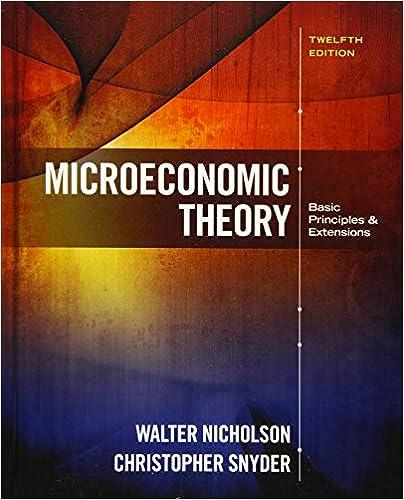A monopolist faces a market demand curve given by Q 5 70 2 p. a. If the
Question:
A monopolist faces a market demand curve given by Q 5 70 2 p.
a. If the monopolist can produce at constant average and marginal costs of AC 5 MC 5 6, what output level will the monopolist choose to maximize profits? What is the price at this output level? What are the monopolist’s profits?
b. Assume instead that the monopolist has a cost structure where total costs are described by C1Q2 5 0.25Q2 2 5Q 1 300.
With the monopolist facing the same market demand and marginal revenue, what price–quantity combination will be chosen now to maximize profits? What will profits be?
c. Assume now that a third cost structure explains the monopolist’s position, with total costs given by C1Q2 5 0.0133Q3 2 5Q 1 250.
Again, calculate the monopolist’s price–quantity combination that maximizes profits. What will profit be? Hint:
Set MC 5 MR as usual and use the quadratic formula to solve the second-order equation for Q.
d. Graph the market demand curve, the MR curve, and the three marginal cost curves from parts (a), (b), and (c).
Notice that the monopolist’s profit-making ability is constrained by (1) the market demand curve (along with its associated MR curve) and (2) the cost structure underlying production.
Step by Step Answer:

Microeconomic Theory Basic Principles And Extensions
ISBN: 9781305505797
12th Edition
Authors: Walter Nicholson, Christopher M. Snyder






